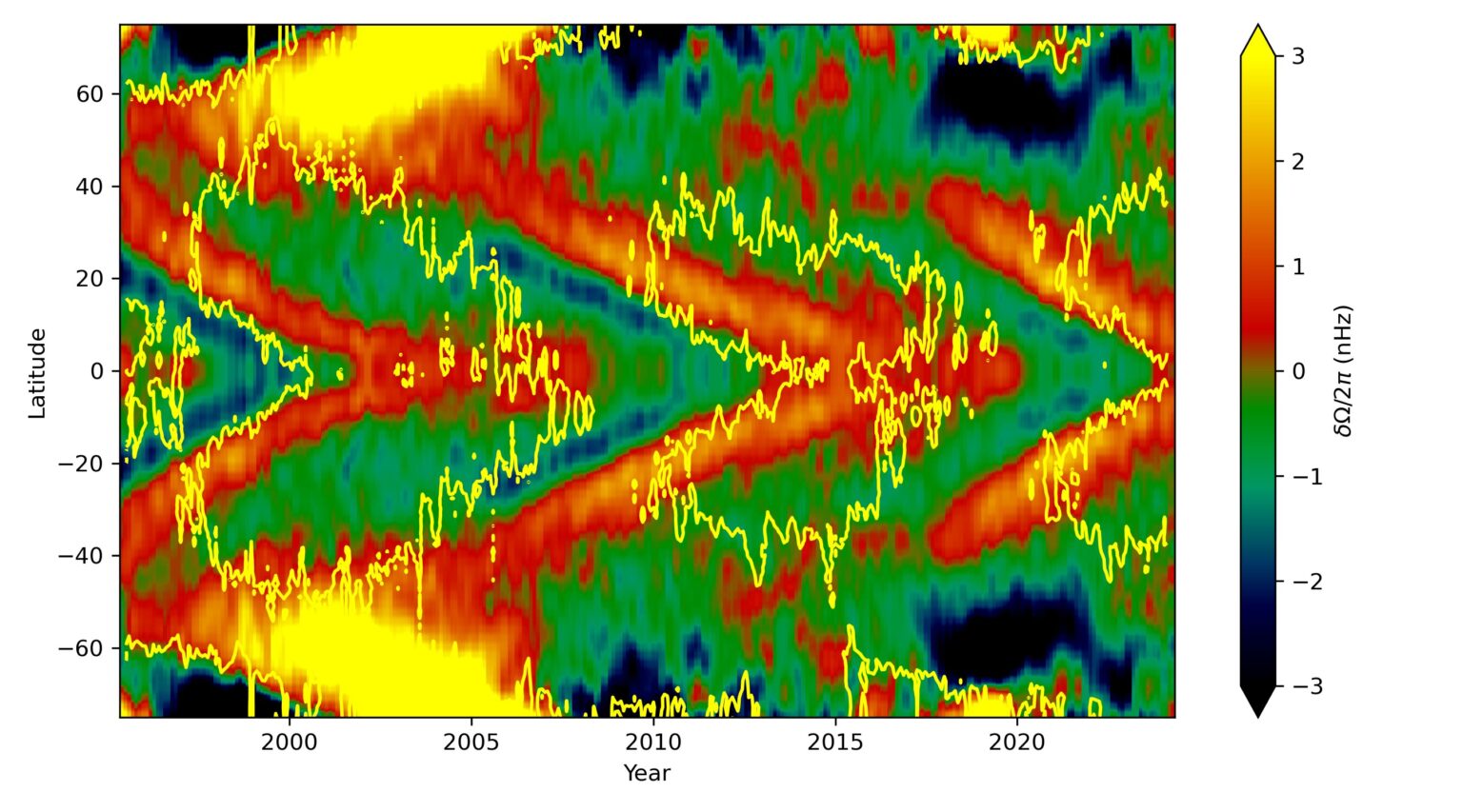While everyone is waiting for the current 25th solar cycle to end, some scientists have noticed something unusual in the behavior of our luminary. They say the next one may have already begun.

Solar activity periods
The first signs of the next 11-year solar cycle have been detected in sound waves inside our home star — even if it is only halfway through its current cycle.
The current cycle is at its peak, or “solar maximum,” when the Sun’s magnetic field turns over and its poles switch places. It will last until mid-2025.
This affects activity on the Sun’s surface: sunspots, flares and coronal mass ejections become more rampant during the maximum. The result is bursts of electromagnetic energy that hurtling towards the Earth, and makes the aurorae visible more often and at lower altitudes.
The current solar cycle began in 2019, it is named the 25th solar cycle because it is the 25th since 1755 when widespread recording of sunspot activity began.
It is not expected to end for another six years, but the first signs of the start of the next solar cycle have been spotted by researchers from the University of Birmingham and presented at the Royal Astronomical Society’s National Astronomy Meeting in Hull.
Study of sound waves inside the Sun
Astronomers use the Sun’s internal sound waves to measure how it rotates, making visible a pattern of bands (solar torsional oscillations) that rotate slightly faster or slower. They move toward the equator and poles of the Sun during the activity cycle.
Accelerated rotation belts tend to appear before the official start of the next solar cycle. Dr. Rachel Howe and her international colleagues found a faint indication that the next solar cycle is beginning to show up in the data they have analyzed based on rotation bands.
“If you go back one solar cycle—11 years—on the plot, you can see something similar that seems to join up with the shape that we saw in 2017. It went on to be a feature of the present solar cycle, Cycle 25,” said Dr. Howe, a researcher at the University of Birmingham.
The Sun’s torsional oscillation signals have been studied using helioseismic data from the Global Oscillation Network Group (GONG), the Michelson Doppler Imager (MDI) aboard the Solar and Heliospheric Observatory, and the Helioseismic and Magnetic Imager (HMI) aboard the Solar Dynamics Observatory since 1995.
The data now covers the first four years of solar cycles 23, 24 and 25, allowing researchers to compare the growth phases of these cycles.
Repeated processes
Dr. Howe has been tracking changes in the Sun’s rotation for about 25 years, when scientists had only a fraction of the 23rd solar cycle data from GONG and MDI.
They were able to see a pattern of drifting faster moving material toward the equator along with sunspots. They have since observed this pattern repeated (but not exactly) during cycle 24, as well as during the growth of cycle 25.
“It’s exciting to see the first hint that the pattern will repeat again in Cycle 26, which is due to start in about six years.
“With more data, I hope we can understand more about the part these flows play in the intricate dance of plasma and magnetic fields that form the solar cycle,” she said.
According to phys.org


